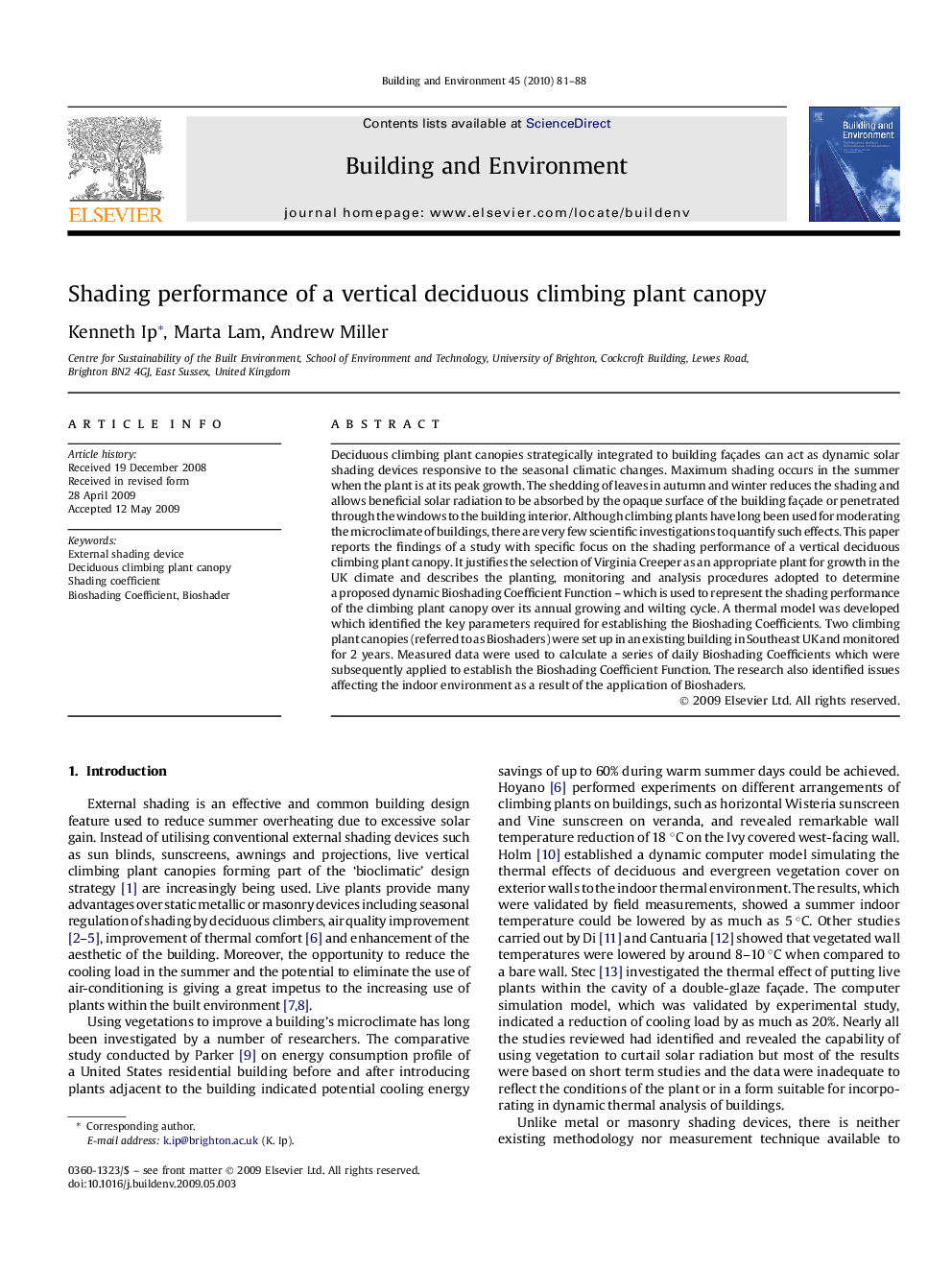| Article ID | Journal | Published Year | Pages | File Type |
|---|---|---|---|---|
| 249314 | Building and Environment | 2010 | 8 Pages |
Deciduous climbing plant canopies strategically integrated to building façades can act as dynamic solar shading devices responsive to the seasonal climatic changes. Maximum shading occurs in the summer when the plant is at its peak growth. The shedding of leaves in autumn and winter reduces the shading and allows beneficial solar radiation to be absorbed by the opaque surface of the building façade or penetrated through the windows to the building interior. Although climbing plants have long been used for moderating the microclimate of buildings, there are very few scientific investigations to quantify such effects. This paper reports the findings of a study with specific focus on the shading performance of a vertical deciduous climbing plant canopy. It justifies the selection of Virginia Creeper as an appropriate plant for growth in the UK climate and describes the planting, monitoring and analysis procedures adopted to determine a proposed dynamic Bioshading Coefficient Function – which is used to represent the shading performance of the climbing plant canopy over its annual growing and wilting cycle. A thermal model was developed which identified the key parameters required for establishing the Bioshading Coefficients. Two climbing plant canopies (referred to as Bioshaders) were set up in an existing building in Southeast UK and monitored for 2 years. Measured data were used to calculate a series of daily Bioshading Coefficients which were subsequently applied to establish the Bioshading Coefficient Function. The research also identified issues affecting the indoor environment as a result of the application of Bioshaders.
